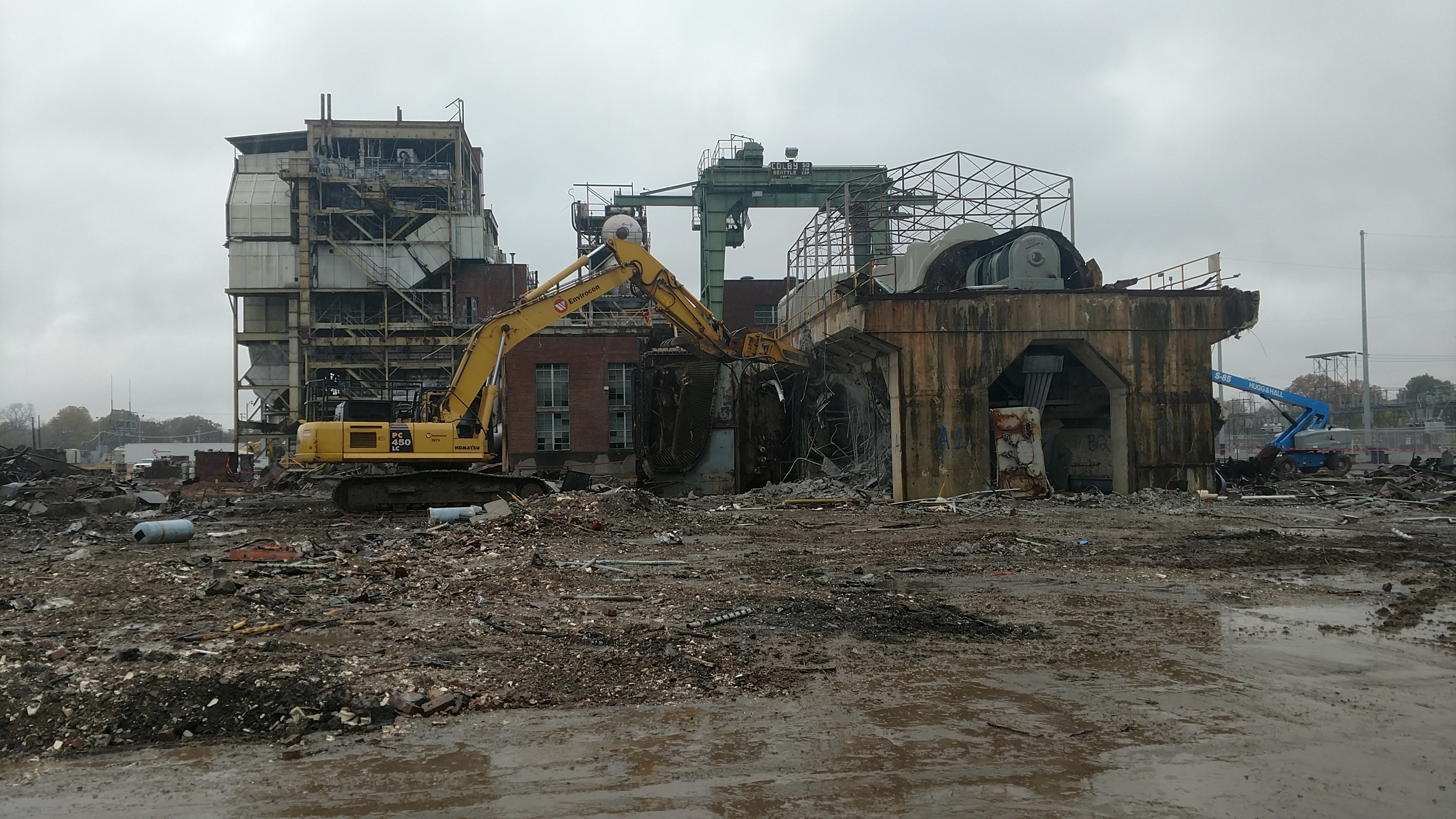Envirocon’s rich history of performing projects in the decommissioning and demolition (D&D) industry began with our first major $4.4M project in 1993. From this first facility demolition at the Broderick Wood Products Superfund site to the recent demolition of a four-unit 1760MW coal-fired power plant, Envirocon’s D&D projects span a wide breadth of sectors including industrial and manufacturing facilities, radiological, army installations, power plants, and smelters. Significant demolition projects are discussed below.

Former Chemical Weapons Dismantlement Facility Demolition
Envirocon demolished the Tooele Chemical Agent Disposal Facility at the Tooele Army Depot safely, within budget, and ahead of schedule. The Utah facility was used for dismantling chemical weapons under the Chemical Weapons Convention, processing VX, Sarin, and mustard gas. This RCRA project involved a complex 32 building facility consisting of heavily reinforced, blast resistant steel, and concrete structures. Envirocon mobilized eight excavators equipped with grapple buckets, hydraulic shears, hydraulic hammers, universal processors, magnets, and powered screen buckets. Several challenging structures were the 90-foot tall pollution abatement system (PAS) and 40-foot tall munitions demilitarization building. Envirocon designed a Felling Plan to drop the PAS structure using a PC400 excavator with shear instead of an ultra-high reach shear as was originally required. This value-added solution saved costs for our client and reduced risk to workers.
Demolition of a Uranium Conversion Facility
Envirocon added a complex radiological demolition project to our resume with the selective dismantlement and demolition of a uranium conversion facility in Gore, OK. The demolition area encompassed 85 acres: one facility processed depleted uranium, while the other converted yellowcake uranium to uranium hexafluoride (UF6) gas. Both processes involved various chemical states of uranium and caustic solutions used for digestion and fluorination of the uranium. Envirocon demolished 15 facilities, occupying over 265,000 square feet. The largest building–a four-story, steel frame with 95,000 square feet on the ground floor–contained the UF6 conversion process equipment. Envirocon developed a strategy to minimize manual dismantlement techniques and maximize the use of heavy equipment for dismantlement, size reduction, and processing. This approach ensured more effective labor utilization; enhanced worker safety; and accelerated schedule performance. This resulted in a 20% cost reduction and allowed for the recovery of 100,000 pounds of uranium.
Coal-Fired Power Plant Demolition
Envirocon planned and safely executed the decommissioning and demolition of a 450MW coal-fired power plant in Canadys, SC using excavators and attachments: shears, hammers, grapple and magnet, and pulverizers. Demolition activities included dismantlement of the turbines (two 125MW and one 200MW) and generators using overhead cranes. We demolished two cooling towers (35.5 feet tall, 23,760 square feet footprint) which were wood structures built over a concrete reservoir and a third tower (39.5 feet, 35,840 square feet footprint) constructed of precast concrete. Envirocon also demolished the associated turbine halls (two, 60-feet, 23,600 square feet and one, 69-feet, 18,600 square feet). Engineered controlled drop plans were developed for the coal bunkers (two 60-feet and one 77-feet), boilers (two, 100-feet and one 110-feet), stacks (three, 200-feet), and steel baghouse (92.5 feet). Hinge cuts and pulling cables were used to safely fell the bunkers, boilers, and the baghouse according to our engineered drop plans. The 200-foot stacks were felled using explosives. The safe execution of the work was achieved through careful planning and coordination with the client, our subcontractors, and crew members.
Lead Smelter Demolition at a Superfund Site
Envirocon recently executed a two-phase lead smelter facility demolition and remediation project at the East Helena Superfund Site in East Helena, MT. Our demolition and environmental specialists safely blended their expertise to demolish process equipment; 72 building structures of wood, steel, concrete, and brick construction; place demolition debris in an on-site containment cell; and construct a cell cap. Envirocon recovered and recycled 7,000 tons of steel, 800,000 pounds of lead, and 200 tons of copper. The labor-intensive decontamination of building interiors to remove dust containing extremely high levels of lead, arsenic, and cadmium was critical to the recovery and demolition process. Detailed dust control and monitoring procedures were developed to ensure the safety of the workers and community by eliminating the potential for exposure to dust during demolition operations. Envirocon’s engineering controls and diligence enabled the heavy metal dust to be safely removed, never reaching established control levels any time during the project.
Envirocon provides reliable and safe demolition services across all commercial and federal market sectors with the ability to combine our environmental resources for a more comprehensive approach. For more information on our services, go to www.envirocon.com.